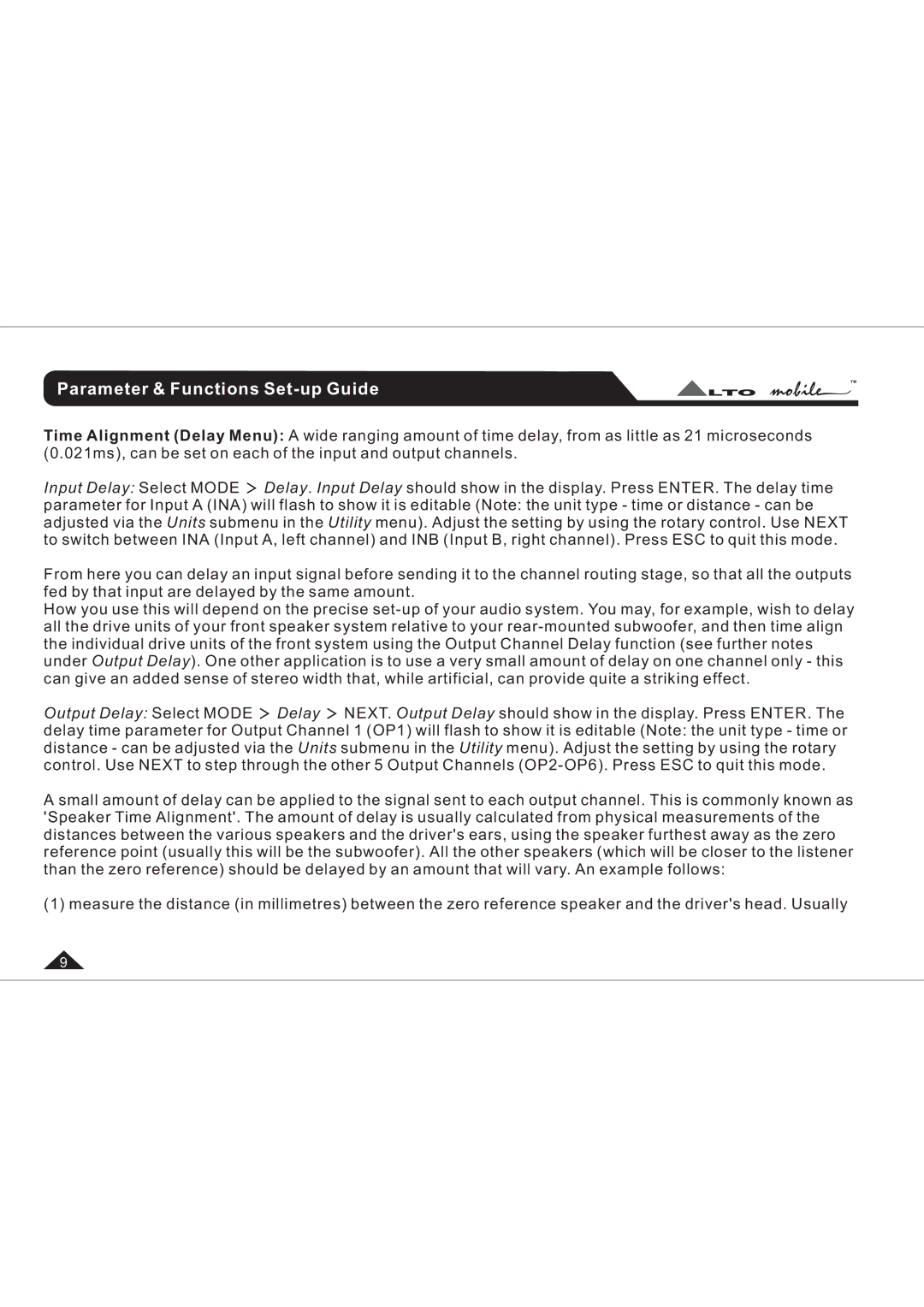
Parameter & Functions | TM |
LTO |
Time Alignment (Delay Menu): A wide ranging amount of time delay, from as little as 21 microseconds (0.021ms), can be set on each of the input and output channels.
Input Delay: Select MODE ![]() Delay. Input Delay should show in the display. Press ENTER. The delay time
Delay. Input Delay should show in the display. Press ENTER. The delay time
parameter for Input A (INA) will flash to show it is editable (Note: the unit type - time or distance - can be adjusted via the Units submenu in the Utility menu). Adjust the setting by using the rotary control. Use NEXT to switch between INA (Input A, left channel) and INB (Input B, right channel). Press ESC to quit this mode.
From here you can delay an input signal before sending it to the channel routing stage, so that all the outputs fed by that input are delayed by the same amount.
How you use this will depend on the precise
Output Delay: Select MODE ![]() Delay
Delay ![]() NEXT. Output Delay should show in the display. Press ENTER. The
NEXT. Output Delay should show in the display. Press ENTER. The
delay time parameter for Output Channel 1 (OP1) will flash to show it is editable (Note: the unit type - time or distance - can be adjusted via the Units submenu in the Utility menu). Adjust the setting by using the rotary control. Use NEXT to step through the other 5 Output Channels
A small amount of delay can be applied to the signal sent to each output channel. This is commonly known as 'Speaker Time Alignment'. The amount of delay is usually calculated from physical measurements of the distances between the various speakers and the driver's ears, using the speaker furthest away as the zero reference point (usually this will be the subwoofer). All the other speakers (which will be closer to the listener than the zero reference) should be delayed by an amount that will vary. An example follows:
(1) measure the distance (in millimetres) between the zero reference speaker and the driver's head. Usually
9
